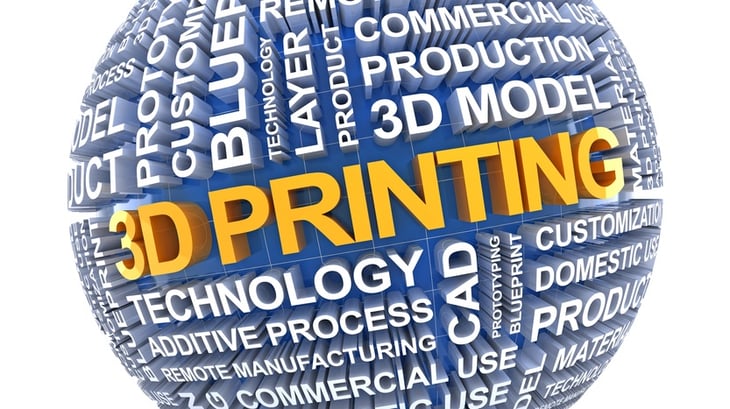
Early concepts of 3-D printing have been around since the late 1980s. In recent years, 3-D printing, or additive manufacturing, really took off thanks to mobile technology. Designs for products happen on computers, and then files can upload to smartphones, tablet computers and other connected devices. These devices include 3-D printers that have wireless capabilities.
How does 3-D printing affect your supply chain? In general, it makes your supply chain more streamlined and efficient. That, in turn, saves you money. Here’s how that happens.
Less Inventory
Rather than keeping stocks of hundreds or thousands of items that you may or may not need in the future, 3-D printing takes raw materials and turns them into products on an as-needed basis. When your warehouse saves room, you have space for other products and you could even downsize your warehouse space. Plus, you don’t have to wait for shipments to come from another company to get products or raw materials. Your supply chain becomes more efficient because you are the supply chain when a customer calls.
Instead of a physical inventory, you have a virtual inventory stored on computer files. Share your inventory with prospective customers, and then your clients pick out what they need from your list. Once your clients figure out what they need, you can print a production run based on their volume and time to delivery. Instead of waiting weeks for parts and raw materials or maintaining tons of inventory, your printer’s raw materials are the inventory.
Less Downtime
3-D printing means you have less downtime switching between products. For example, you have a production run that makes very specific car parts for a customer. When that production run ends and you have to switch to vacuum cleaner parts, you have to shut down the entire line, switch out the equipment, supply the raw materials, test the run to make sure everything works and then get back up to full production.
With 3-D printing, you can switch from one product to another very quickly just by updating a computer file and inputting the necessary raw materials. As long as your parts fit in the printer and have the same materials, your downtime comes to minutes rather than hours or even days.
Better Responsiveness
Let’s say a customer needs a very specific part for a very specific piece of equipment. Rather than waiting several weeks to receive the part from a company, your 3-D printing capabilities take over and produce the part in a fraction of the time.
Further, your firm can produce a wider-variety of products and lower-volume runs. That’s because you don’t need a lot of time to switch from one type of automated production line to another. A 3-D printer can make thousands of objects, whereas a specialized piece of equipment can only make one. You don’t have to set up a new batch of raw materials from a supplier since they are already attached to the printer.
Because you delivered in a timely manner, your customers stay with you and you develop a loyal base of paying clients. Your customer service improves markedly, and you have happy customers. When customers win, you win.
More Efficient R&D
Part of the time-to-market equation includes research and development. Traditional manufacturing means you make a prototype, make a small production run, change the design if necessary and then restart the run. With 3-D printing, you can make changes after just one design. Even better, the design alterations come in the computer and you can share your improvements with the customer. Instead of waiting for new materials and parts coming from a supplier, you just print out an improved prototype and continue your research and development towards having the optimized final product.
Fewer Raw Materials
Your supply chain becomes more efficient using 3-D printing. That’s because you don’t need 35 separate parts to make one larger part. Now, you may need just a few raw materials that feed the 3-D printing process. These materials may include injectable mold plastics, liquids or even liquid metals in some high-end models. When you have these materials on hand all of the time, you have fewer disruptions in the supply chain which keeps your production moving forward in the most efficient manner possible.
More Investment or More Profits
When your supply chain becomes more efficient, you save money. When you save money, your company can invest the money to improve the 3-D printing paradigm or give profits to stakeholders. When your firm is owned by employees, that means your workers get a greater bit of profits thanks to their hard work.
3-D printing makes your production model more mobile and agile. Instead of making massive shifts in production when you have new supplies, new finished products and new orders, all you need to do is make a few adjustments to win the day.











